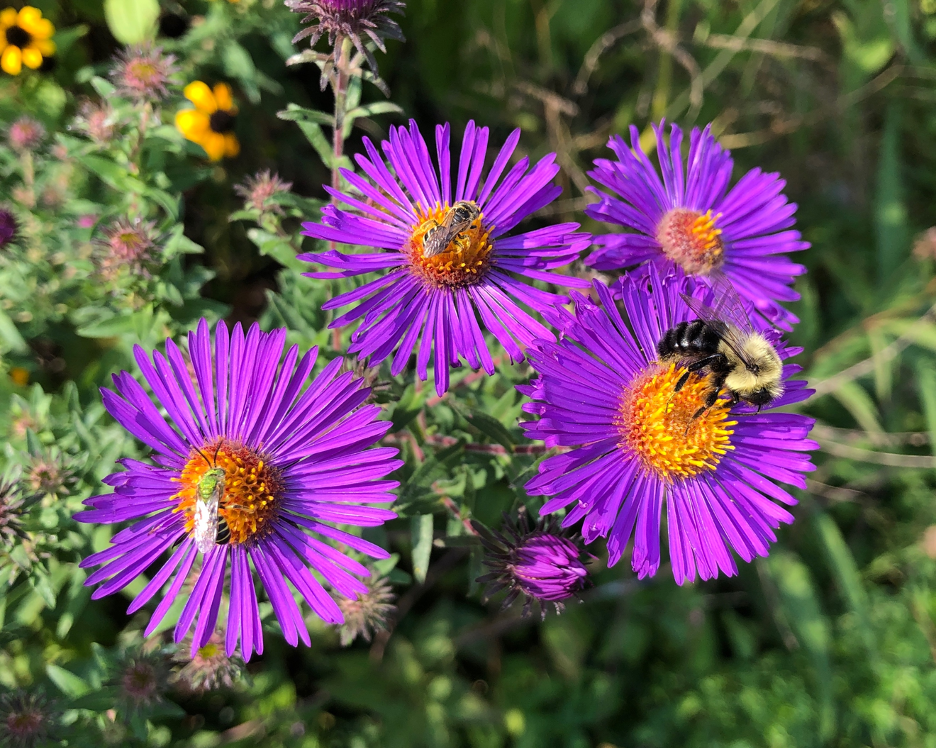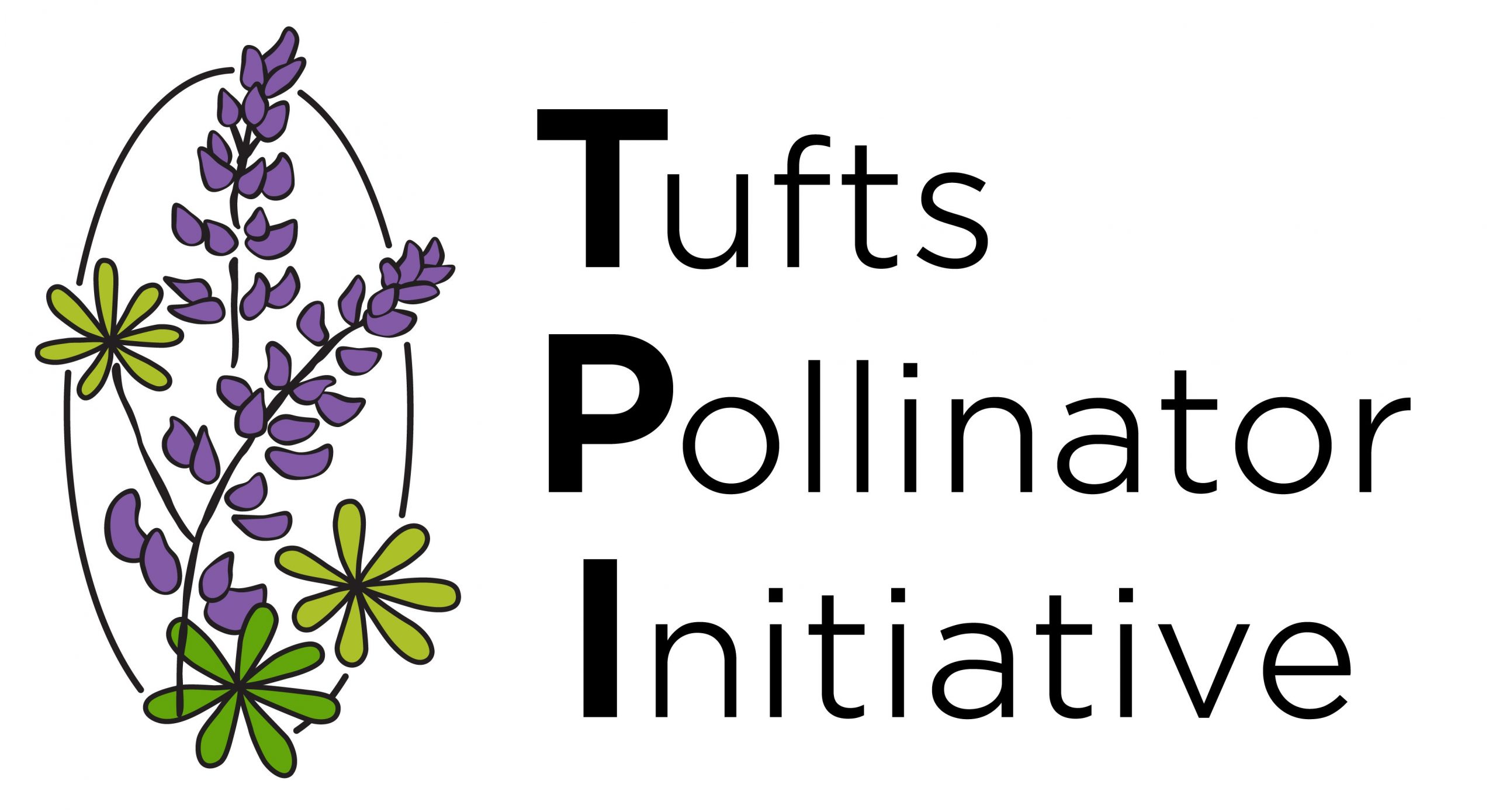Our pollinator gardens are planted with New England-native wildflowers.
Why native? Native plants offer many environmental benefits not offered by ornamental, non-native counterparts. Native plants…
Reduce the inputs needed to maintain landscapes over the long-term. Native plants are adapted to local climate and soil fertility, are drought tolerant, and are perennial (re-sprout every year).
Attract wildlife like bees, butterflies and seed-eating birds. Native plants offer food (pollen, nectar, and leaves) and nesting resources for insects. Gardens planted with natives quickly become ecologically relevant, sustaining a large network of interactions in relatively small spaces.
Rival the aesthetics of a more traditional ornamental garden. From experience, passersby are not any less excited about a native garden than a non-native one.

We planted more than 20 species of perennial native plants (sourced from Prairie Moon Nursery, Prairie Nursery, and Blue Moon Farm Perennials) in each garden. Our gardens not only support pollinators but also demonstrate the diversity of plants that can grow in small urban spaces. Some of the most attractive plants to both pollinators and humans in our gardens are:
– Foxglove beardtongue (Penstemon digitalis)
– Wild bergamot (Monarda fistulosa)
– Culver’s root (Veronicastrum virginicum)
– Cutleaf coneflower (Rudbeckia laciniata)
– Sweet black-eyed susan (Rudbeckia subtomentosa)
– Virginia mountain mint (Pycnanthemum virginianum)
– Blazing star (Liatris scariosa)
– New York ironweed (Vernonia noveboracensis)
– Seaside goldenrod (Solidago sempervirens)
– Joe-pye weed (Eutrochium maculatum)
– New England aster (Symphyotrichum novae-angliae)

